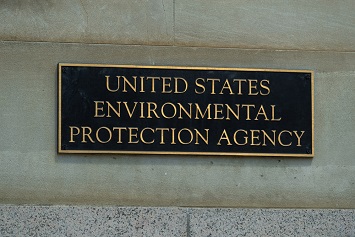In the third quarter (Q3), the EPA finalized 327 settlement agreements with companies small and large across the United States. This represents a significant increase in enforcement actions—up from 162 penalties issued in Q2 for 2020. The actions taken resulted in $6,367,710 in fines. Here are some of the highlights.
RCRA Violations Yield Biggest Fine from EPA
The largest fine assessed by the EPA in Q3 was to an industrial coatings manufacturing company to resolve Resource Conservation and Recovery Act (RCRA) violations associated with notification of hazardous waste activity, among others. The company violated RCRA when it failed to notify the EPA
in an adequate and timely manner of its hazardous waste activities. Additionally, the facility exceeded its declared conditionally small quantity generator (SQG) status and operated in all instances as a large quantity generator (LQG) in violation of one of the requirements for LGQs. The company was assessed a penalty of $728,817.
There were additional enforcement actions taken against 35 other entities for RCRA violations, with penalties that ranged from $1,000 to $125,000. In all, RCRA violations accounted for $1,686,773 in Q3.
Emphasizing Clean Water
The EPA cited 81 different entities for violations of the Clean Water Act (CWA), including oil and construction companies, for inadequate Spill Prevention, Control, and Countermeasure (SPCC) Plans, as well as towns and cities for National Pollutant Discharge Elimination System (NPDES) permit violations. The fines totaled $688,773 and ranged from $1,800 to $200,000.
CAA Violations Bringing Six-Figure Fines
The EPA continues its consistent enforcement for violations of the Clean Air Act (CAA):
- An oil refinery was fined $286,500 for violations of the New Source Performance Standard for equipment leaks of volatile organic compounds (VOCs) in the synthetic organic chemicals manufacturing industry, as well as violations of its Title V permit at its Indiana facility.
- A crop inputs provider in Illinois was penalized $244,709 for violations of the Prevention of Accidental Release/risk management plan (RMP) after the accidental release of ammonia at its facility.
- An oil and gas company in North Dakota was fined $200,000 for violating the implementation plan for national primary and secondary ambient air quality standards at an Indian reservation.
- A cold food storage manufacturer in Colorado was penalized $156,081 for RMP violations related to the management of anhydrous ammonia, including deficiencies associated with safety and emergency contact information, hazard analysis, mechanical integrity, operating procedures, and compliance audits.
Targeting Pesticide Distribution
A garden center in Colorado was fined approximately $285,000 for violating the Federal Insecticide, Fungicide, and Rodenticide Act (FIFRA) when it misbranded four pesticide products. The facility was using outdated labeling that did not contain current directions for proper storage and disposal of pesticide containers.
A pesticide production company in North Carolina was penalized $80,000 for FIFRA violations relating to the distribution of a misbranded pesticide product found at one of its supplemental distributers in Colorado. The supplemental distributor was using outdated labeling that did not contain current directions for proper storage and disposal of pesticide containers.
EPCRA and CERCLA Violations
A chemical supplier company in Michigan was fined approximately $41,000 for violating the Comprehensive Environmental Response, Compensation, and Liability Act (CERCLA) and Emergency Planning and Community Right-to-Know Act (EPCRA) when it failed to immediately notify the National Response Center (NRC) of the release of 8,288 pounds of nitric acid.
A food products supplier was penalized nearly $38,000 for CERCLA and EPCRA violations when it failed to immediately notify the State Emergency Response Commission (SERC), the Local Emergency Planning Committee (LEPC), and the NRC after the release of ammonia in a reportable amount at the company’s Kentucky facility.

